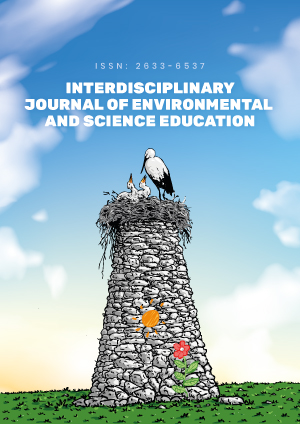Abstract
Understanding the complexity of ecological system is crucial if one is to achieve a proper understanding of what they are and how they function. This study followed an environmental education program designed to introduce fifth grade students from a highly rural community to the world of ornithology and to the importance of maintaining the biodiversity of birds in nature. Its goal was to explore the program’s influence on the development of these students’ system thinking skills in the context of the life-cycle of the Lesser Kestrel (LK). Students’ perceptions of system complexity were tracked using the repertory grid technique, which takes the form of a highly structured interview in which constructs represent participants’ interpretations of various elements and the relationships between them. The results indicate that these fifth graders developed a significantly complex view of the LK’s ecosystem. Participation in the program developed the ability of some of the students to generalize and to identify changes that occurred in the birds’ ecosystem over time. Design elements such as longitudinal real-time observations and learning about the kestrel’s life-cycle while examining its interaction with its environment were found to be important for system thinking development. These cognitive tools may enable students to better cope with complex, biodiversity-related environmental issues in the future.
License
This is an open access article distributed under the Creative Commons Attribution License which permits unrestricted use, distribution, and reproduction in any medium, provided the original work is properly cited.
Article Type: Research Article
INTERDISCIP J ENV SCI ED, Volume 17, Issue 1, 2021, Article No: e2226
https://doi.org/10.29333/ijese/9152
Publication date: 10 Nov 2020
Article Views: 3685
Article Downloads: 1817
Open Access References How to cite this article
 Full Text (PDF)
Full Text (PDF)